Emergency Evacuation Plan Templates in Australia: A Guide for Safety and Compliance
Understanding how to develop an emergency evacuation plan template Australia workplace can rely on for compliance and safety.
Emergencies in the workplace can strike without warning. From fires and chemical spills to power outages, extreme weather, and medical episodes, every organisation must be prepared to act swiftly to protect lives and minimise disruption. Having a clear, structured, and legally compliant evacuation plan is not just best practice, it is a regulatory requirement under Australian workplace health and safety laws.
An effective evacuation plan provides workers, contractors, and visitors with step-by-step guidance on how to respond during emergencies. For businesses that want to streamline this process, using an emergency evacuation plan template Australia wide can provide a reliable, consistent, and legally aligned foundation.
This article will explore the importance of evacuation planning, key legal obligations in Australia, essential components of an evacuation plan, industry-specific considerations, and best practices for implementation.
Why Emergency Evacuation Planning Matters
Emergencies can escalate quickly, leaving little time for decision-making. A lack of preparation often leads to chaos, injuries, and even fatalities. Conversely, organisations with clear and practised evacuation plans ensure:

- Rapid response: Workers know exactly where to go and what to do.
- Reduced risk of injury: Hazards are avoided through well-planned routes and procedures.
- Regulatory compliance: Meeting obligations under Australian workplace safety laws.
- Improved confidence: Employees feel secure knowing their safety is prioritised.
- Business resilience: Quick recovery and reduced downtime after an emergency.
Legal Framework in Australia
In Australia, workplace emergency planning is governed by the Work Health and Safety (WHS) Act 2011 and the accompanying WHS Regulations. These laws apply across most states and territories (with some variations in Victoria and Western Australia).
Key requirements include:
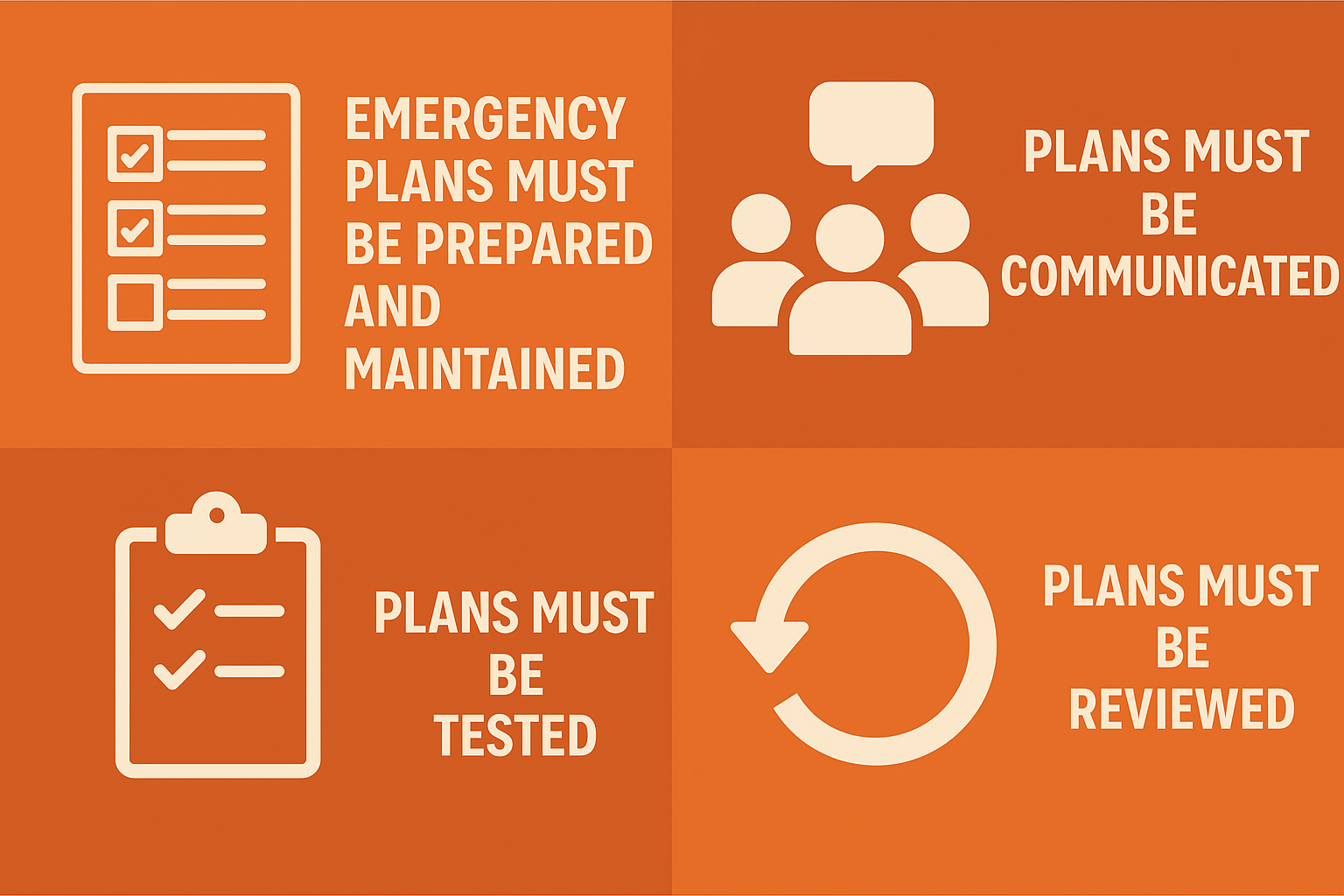
- Emergency plans must be prepared and maintained – Regulation 43 requires workplaces to have a written plan covering emergency procedures.
- Plans must be communicated – Workers must be trained in the procedures, and information must be accessible.
- Plans must be tested – Regular evacuation drills are mandatory to ensure procedures are effective.
- Plans must be reviewed – Updates are required when there are changes in workplace layout, processes, or risks.
WorkSafe Victoria, SafeWork NSW, and other regulators provide guidance materials to help organisations meet these obligations. However, many businesses find it useful to adopt a structured resource such as an emergency evacuation plan template Australia organisations can adapt to their own needs.
Essential Components of an Evacuation Plan
An effective emergency evacuation plan should include the following:
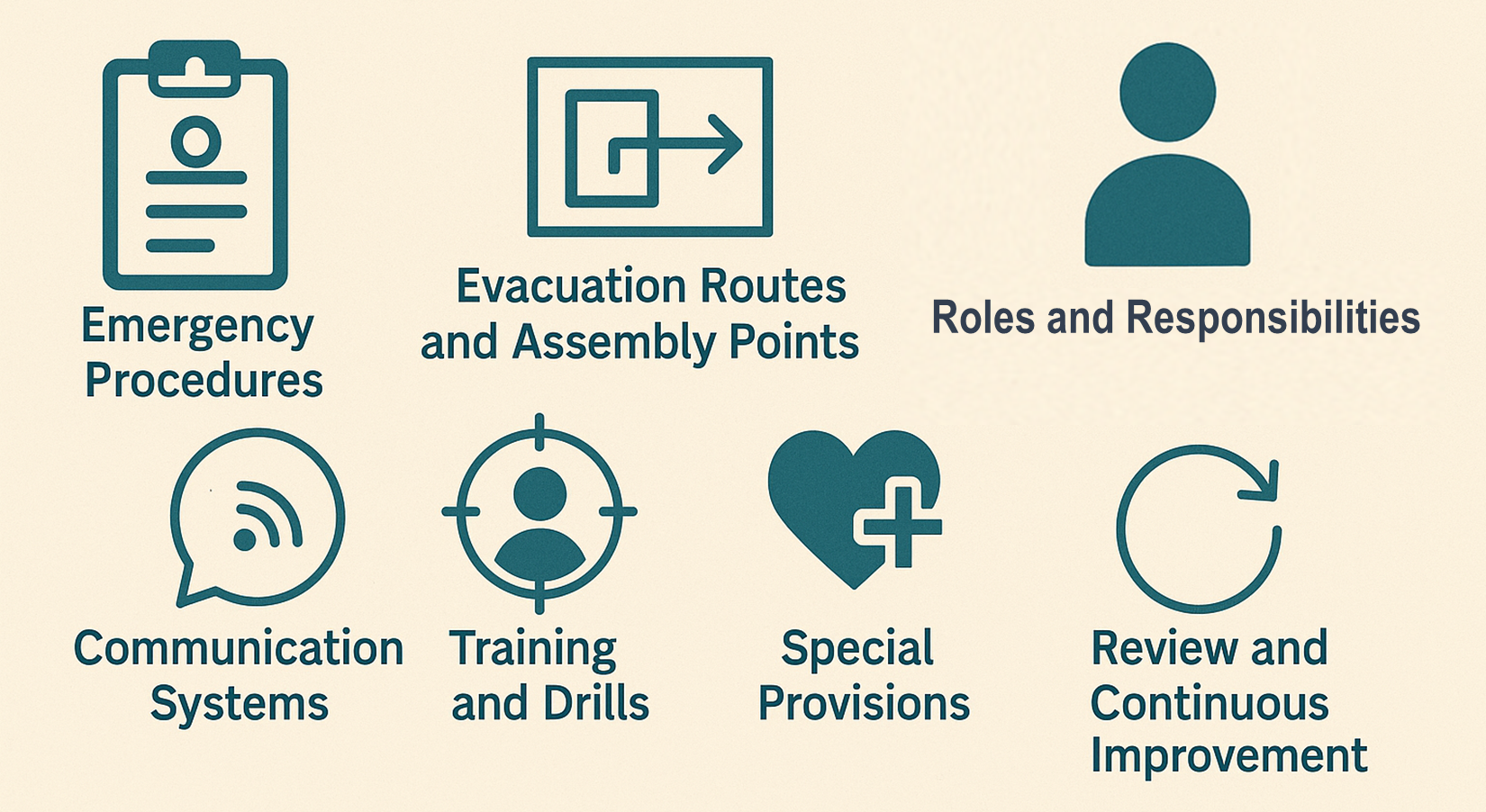
1. Emergency Procedures
Clear instructions for responding to different emergencies such as:
- Fire and smoke
- Chemical spills
- Medical emergencies
- Gas leaks
- Power failures
- Extreme weather (flood, storm, heatwave)
- Security threats
2. Evacuation Routes and Assembly Points
Maps showing exits, evacuation routes, and designated assembly areas. These should be well-lit, unobstructed, and accessible for people with disabilities.
3. Roles and Responsibilities
Allocation of responsibilities is vital. Typical roles include:
- Chief Warden – Overall coordinator during emergencies.
- Area Wardens – Responsible for specific zones or floors.
- First Aid Officers – Provide immediate care for injuries.
- Communications Officer – Ensures emergency services are contacted and updates are shared.
4. Communication Systems
Details on how alerts will be raised, such as alarms, PA systems, or mobile notifications.
5. Training and Drills
Regular evacuation drills must be conducted to test readiness. Training should also cover how to assist visitors and people with special needs.
6. Special Provisions
Considerations for high-risk workplaces, such as handling hazardous substances or working with vulnerable populations (e.g., aged care or childcare).
7. Review and Continuous Improvement
Plans must be reviewed regularly and after each drill or incident.
Industry-Specific Considerations
Construction Sites
Dynamic and constantly changing layouts make it essential to update evacuation maps regularly. Hazards such as scaffolding, machinery, and fuel storage require tailored emergency procedures.
Healthcare and Aged Care
Evacuating patients or residents with mobility issues requires detailed planning and additional resources such as evacuation chairs or specialised transport. Staff must also balance safety with continuity of care.
Offices
While generally low-risk, offices must account for ergonomic hazards, fire risks from electrical equipment, and psychosocial emergencies such as security threats.
Warehousing and Logistics
Large facilities require multiple assembly points, vehicle movement controls, and clear signage to ensure safe evacuation during emergencies.
Schools and Childcare
Plans must prioritise children’s safety, including roll calls, secure assembly areas, and parental communication protocols.
Benefits of Using a Template
Using an emergency evacuation plan template Australia wide offers several advantages:

- Consistency: Standardised format across multiple sites.
- Compliance alignment: Many templates are designed to meet WHS regulatory requirements.
- Ease of updates: Editable templates make it simple to adapt for workplace changes.
- Clarity: Provides a clear visual and written guide for all stakeholders.
Best Practices for Implementation
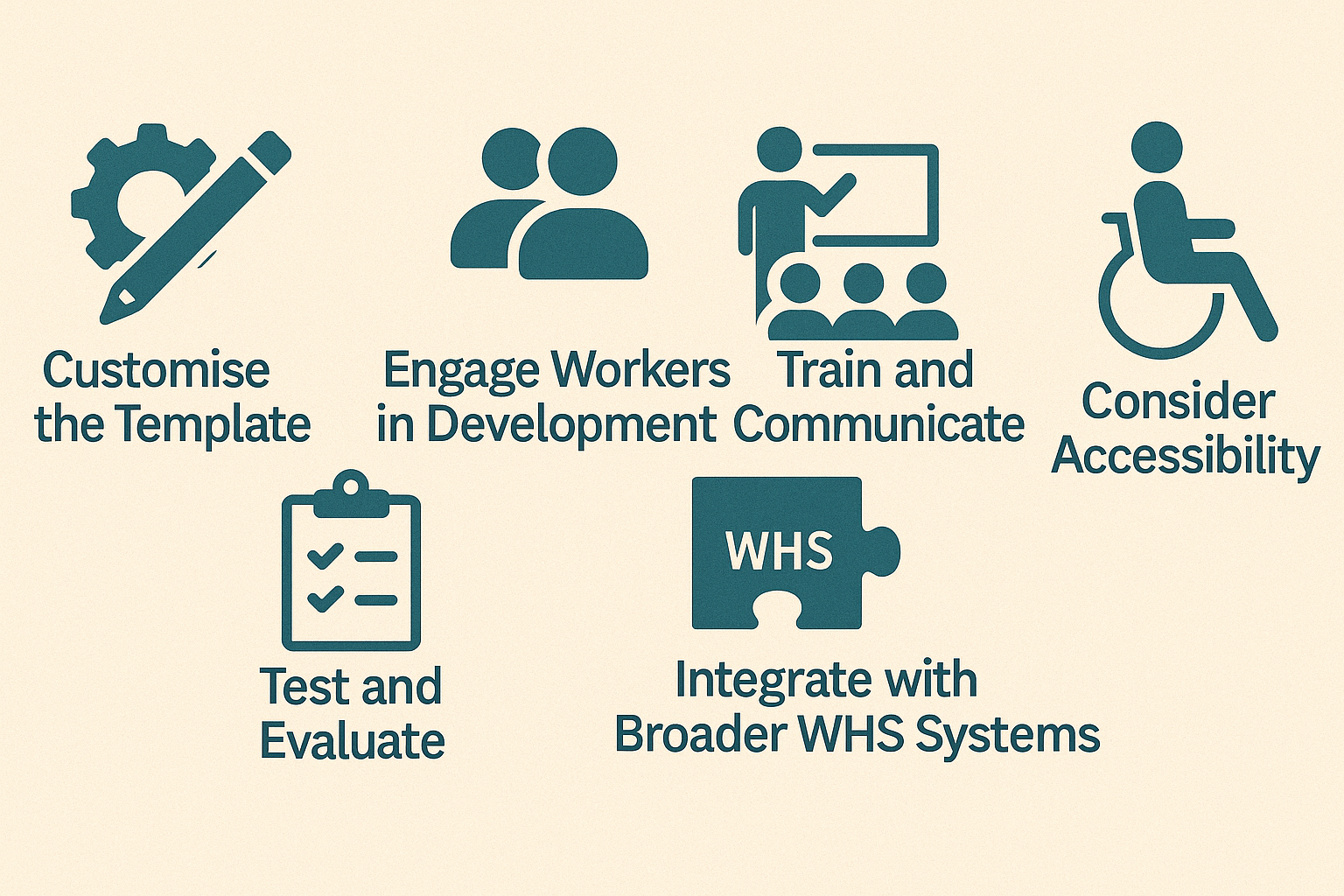
1. Customise the Template
Tailor the document to reflect site-specific hazards, workforce demographics, and workplace layouts.
2. Engage Workers in Development
Consult staff to ensure procedures are practical and reflect real workplace conditions.
3. Train and Communicate
Provide induction and refresher training on evacuation procedures. Display maps in prominent locations.
4. Test and Evaluate
Conduct drills at least annually (or more frequently in high-risk industries). Gather feedback to improve procedures.
5. Integrate with Broader WHS Systems
Link the evacuation plan with risk assessments, incident reporting, and emergency management policies.
6. Consider Accessibility
Ensure plans and drills account for people with disabilities, language barriers, or medical needs.
Technology and Digital Solutions
Digital tools are transforming evacuation planning in Australia. Examples include:
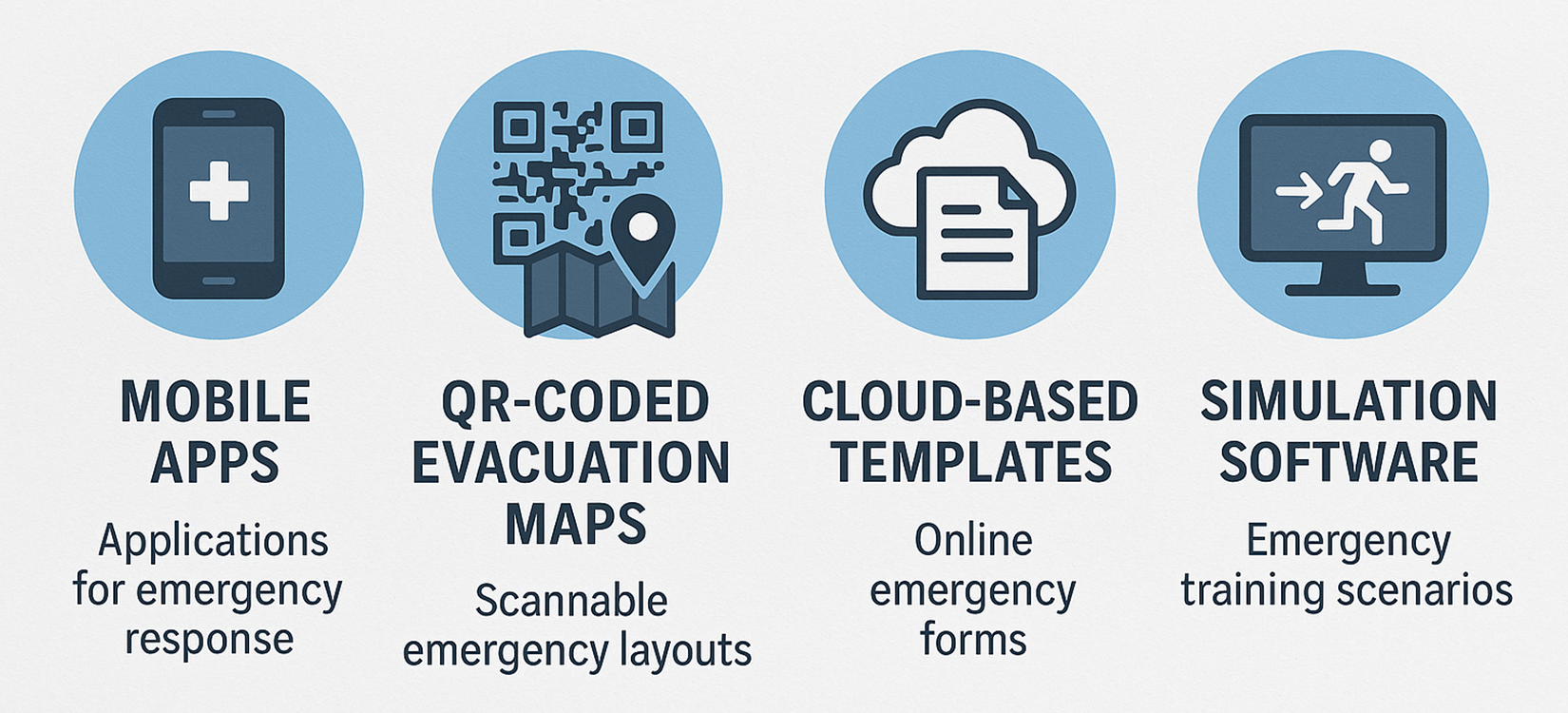
- Mobile apps with instant notifications during emergencies.
- QR-coded evacuation maps for real-time updates.
- Cloud-based templates that can be shared across multiple sites.
- Simulation software for training workers in virtual environments.
These innovations make it easier to maintain compliance, engage workers, and respond effectively during crises.
Common Mistakes to Avoid
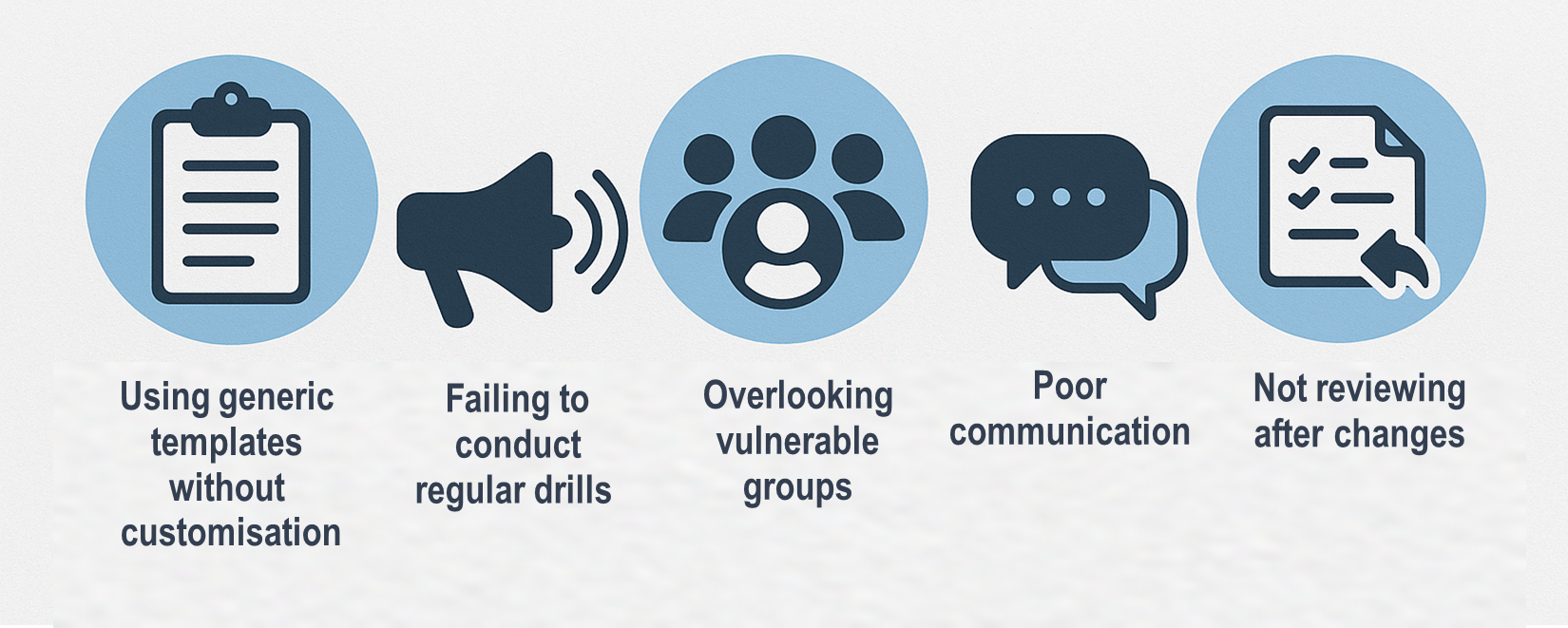
- Using generic templates without customisation – Plans must reflect site-specific needs.
- Failing to conduct regular drills – Without practice, even the best plans can fail.
- Overlooking vulnerable groups – Evacuation strategies must address the needs of all individuals.
- Poor communication – Workers must know their roles and responsibilities well before an emergency.
- Not reviewing after changes – Layout alterations, new equipment, or staffing changes require plan updates.
Case Study: Office Tower in Sydney
A commercial office tower in Sydney adopted a new evacuation template after a regulator’s inspection highlighted gaps in its existing plan. By customising the template to include multiple tenants, high-rise evacuation protocols, and accessible assembly points, the tower improved its preparedness significantly.
During a subsequent fire drill, evacuation times were reduced by 20%, communication improved across all floors, and post-drill surveys indicated higher worker confidence. This example demonstrates how adopting a structured template can lead to measurable improvements in safety and compliance.
Continuous Improvement in Evacuation Planning
Emergency planning is not a one-off task. Organisations should:
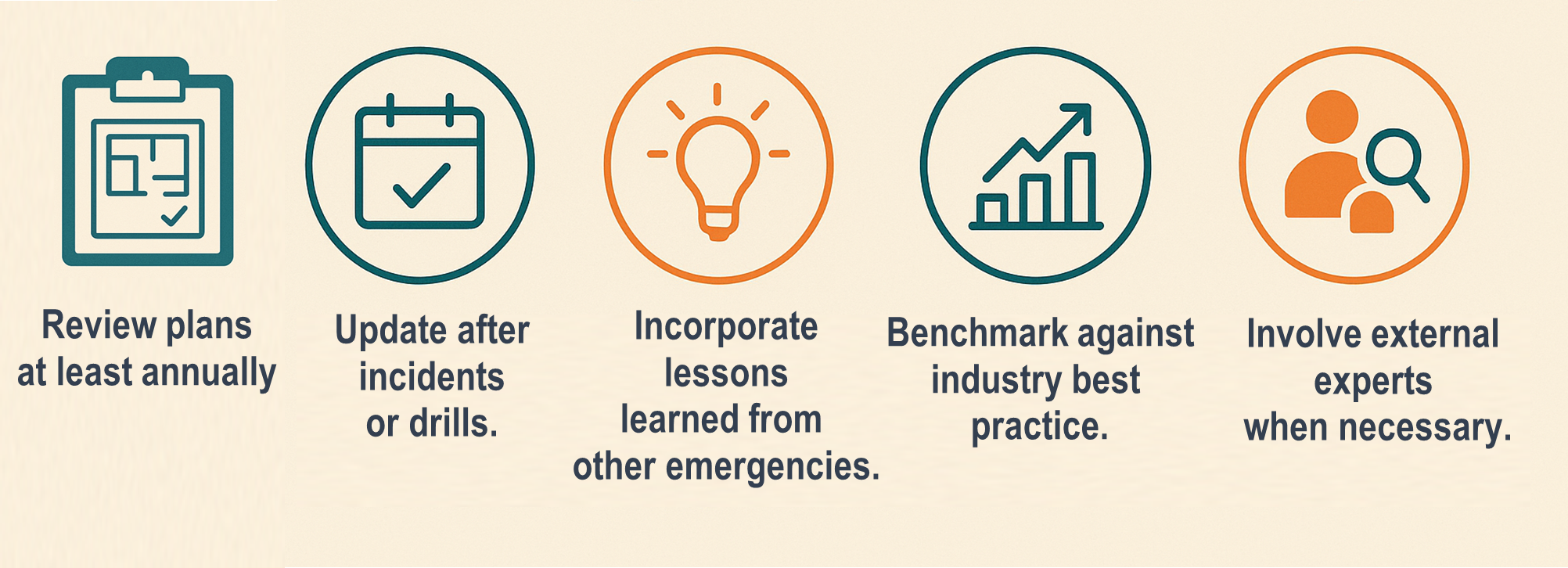
This commitment to continuous improvement builds resilience and demonstrates leadership in workplace safety.
Conclusion
An effective evacuation plan is more than a regulatory requirement: it is a lifesaving tool. Australian businesses must comply with WHS laws that mandate emergency planning, but the real value lies in protecting workers, visitors, and communities.
By using an emergency evacuation plan template Australia organisations can create consistent, compliant, and practical procedures that prepare them for any eventuality. Customisation, worker involvement, training, and regular testing ensure these plans are not just documents but living systems that support resilience.
Ultimately, the goal is simple yet profound: to ensure every individual in a workplace knows what to do, where to go, and how to stay safe when the unexpected occurs. With the right planning and commitment, Australian workplaces can face emergencies with confidence, clarity, and care.
Related Content
Join Our Newsletter
Receive expert insights, safety updates, and the latest updates in our services and apps. Stay ahead of workplace safety, compliance, and operational efficiency delivered straight to your inbox.

.png)
.png)
.png)
.png)
.png)
.png)
.png)
.png)
.png)
.png)